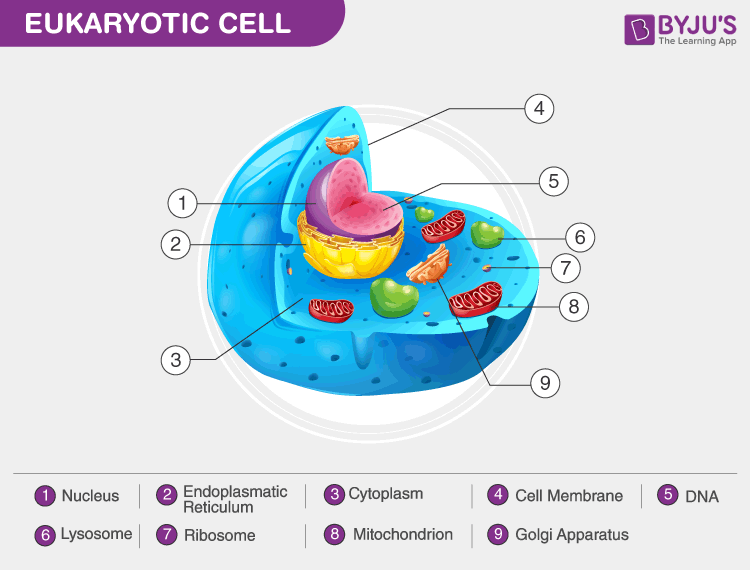
Eukaryotic Cells Definition, Characteristics, Structure, & Examples
The structure of a eukaryotic cell is highly organized and compartmentalized, with various membrane-bound organelles and structures that perform specific functions. These structures are organelles that work together to maintain the cell's functions, including growth, energy production, and response to its environment..

Diagram of eukaryotic cell Brainly.in
Unlike prokaryotic cells, eukaryotic cells have: 1) a membrane-bound nucleus; 2) numerous membrane-bound organelles such as the endoplasmic reticulum, Golgi apparatus, chloroplasts, mitochondria, and others; and 3) several, rod-shaped chromosomes. Because a membrane surrounds eukaryotic cell's nucleus, it has a "true nucleus."
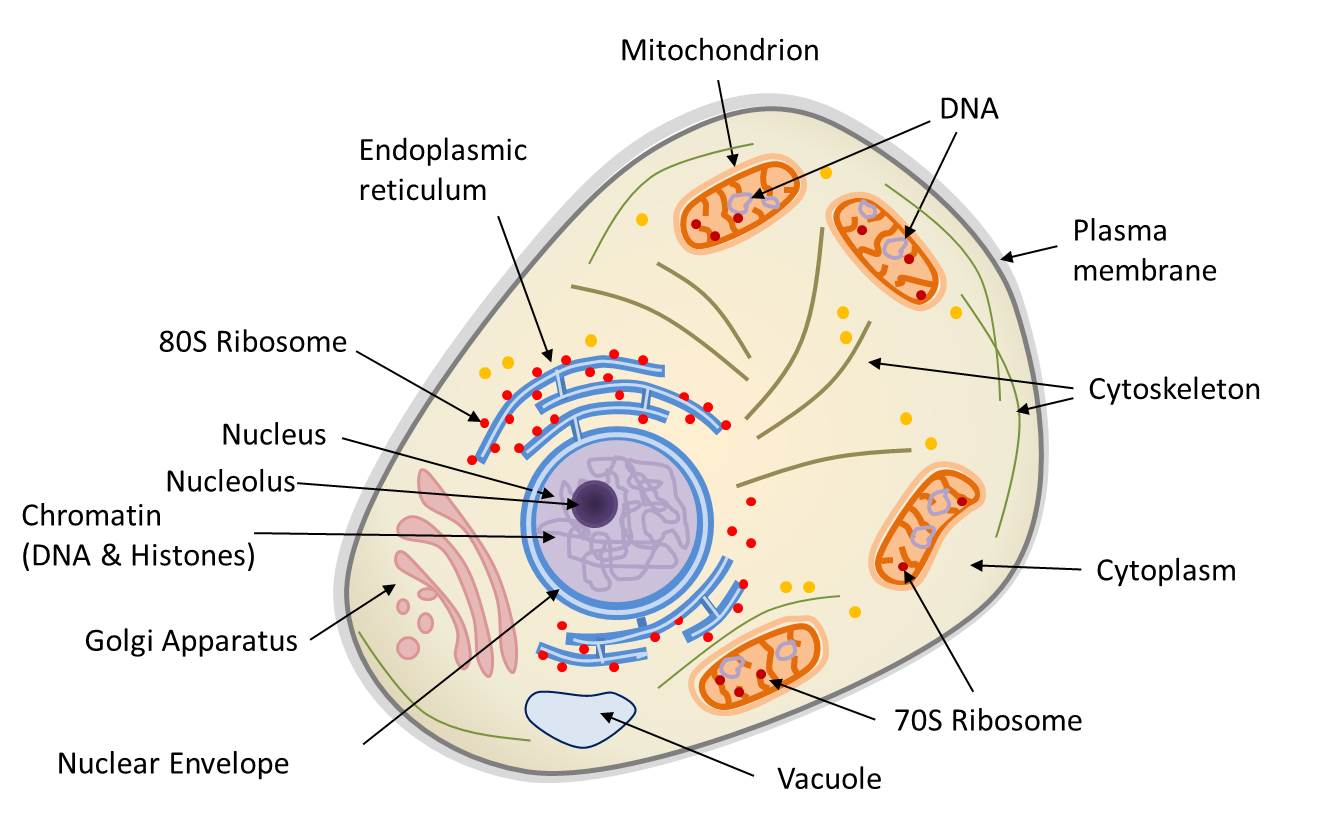
Symbiosis and evolution at the origin of the eukaryotic cell
. Cells of animals, plants and fungi are called eukaryotic cells . Comparing cell types A group of organisms called Archaea are also prokaryotic. Next page Plant and animal cells Previous.

Diagram Of A Eukaryotic Cell Drivenheisenberg
Eukaryotic cells also contain organelles, including mitochondria (cellular energy exchangers), a Golgi apparatus (secretory device), an endoplasmic reticulum (a canal-like system of membranes within the cell), and lysosomes (digestive apparatus within many cell types).

2.2 Prokaryotic and Eukaryotic Cells Biology LibreTexts
The Cytoplasm In cell biology, each eukaryotic cell is separated into two categories: the nucleus, which we just described above, and the cytoplasm, which is, well, everything else.

Eukaryotic cell 951 plays Quizizz
An organelle (think of it as a cell's internal organ) is a membrane bound structure found within a cell. Just like cells have membranes to hold everything in, these mini-organs are also bound in a double layer of phospholipids to insulate their little compartments within the larger cells.

Eukaryotic Cell Diagram
What are the key features of eukaryotic cells? Unlike prokaryotic cells, eukaryotic cells have: A membrane-bound nucleus, a central cavity surrounded by membrane that houses the cell's genetic material. A number of membrane-bound organelles, compartments with specialized functions that float in the cytosol.
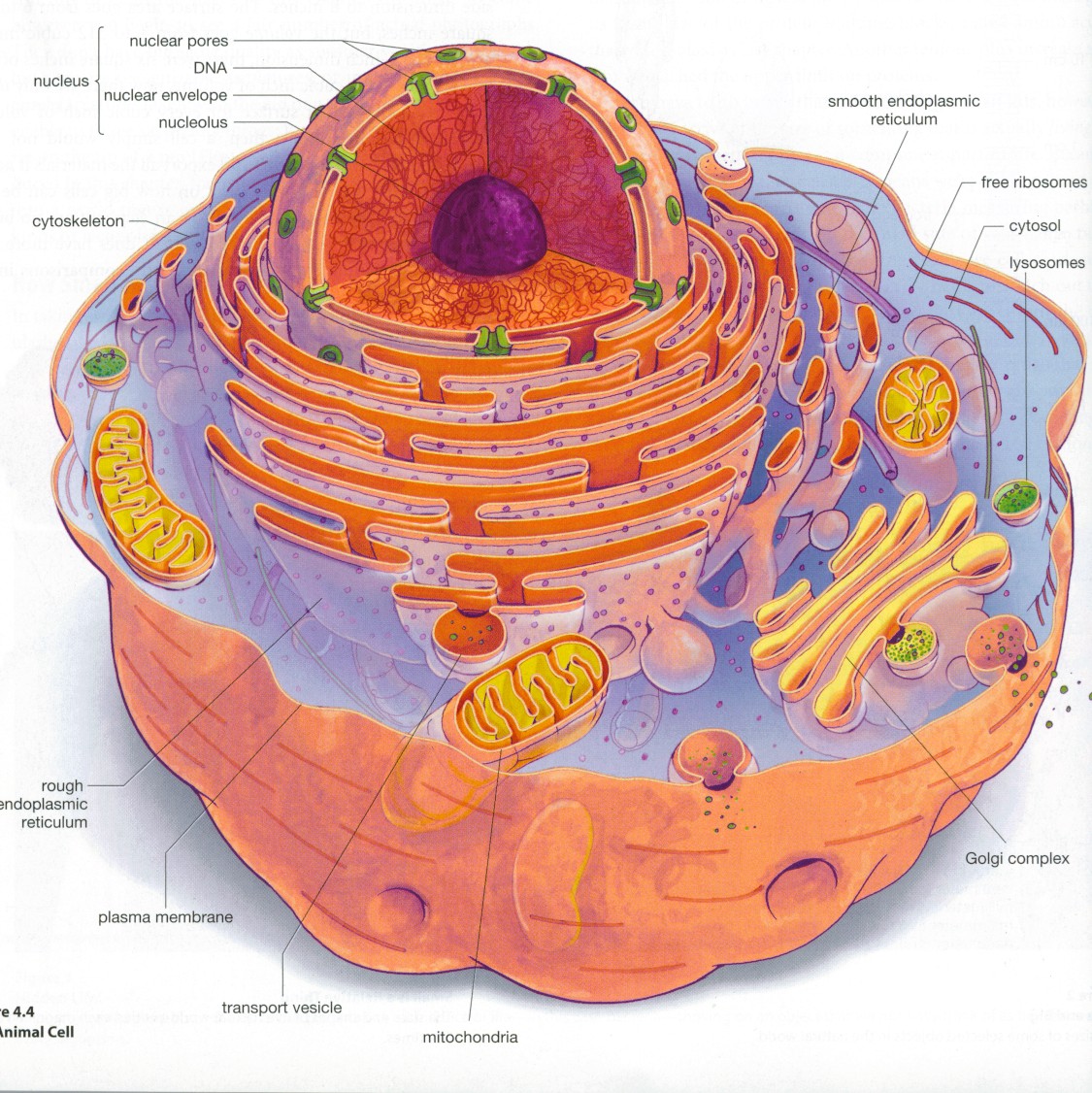
Eukaryotic cell structure diagrams Biological Science Picture
Parts, Functions & Diagrams. Although there are differences among eukaryotes (creature that range from amoebae to elephant), overall, eukaryotic cells share many characteristics. Here's a breakdown. Article Summary: Animals, plants, fungi, protists, algae, and water & slime molds are eukaryotes, organisms composed of one or more nucleated cells.
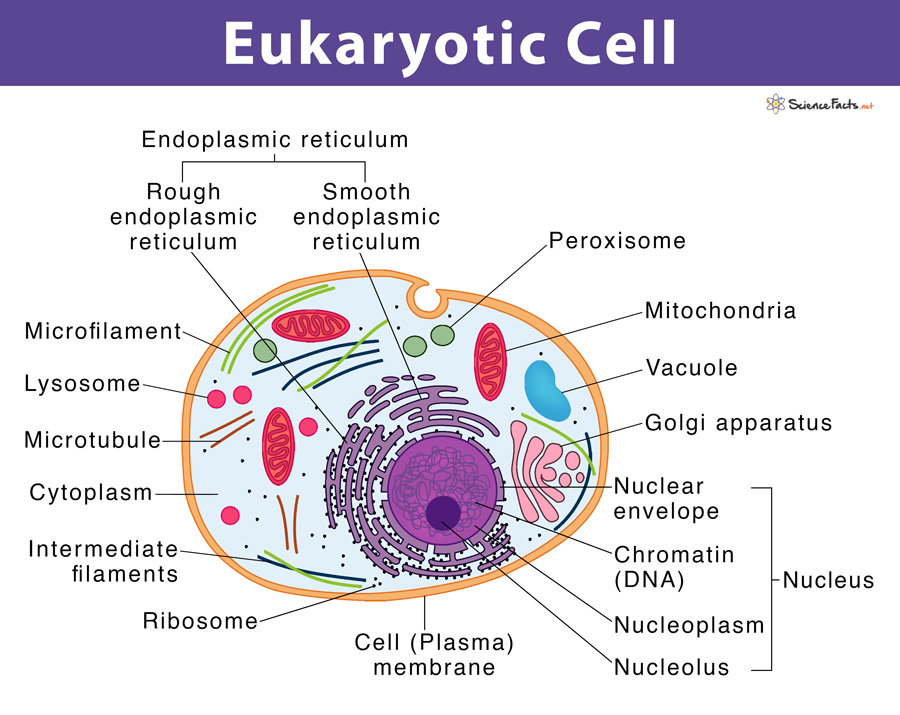
Eukaryotic Cells Definition Eukaryotic Cell Diagram Parts Structure
Diagram Cell Cycle Examples What is a Eukaryotic Cell? Eukaryotic cells have a nucleus enclosed within the nuclear membrane and form large and complex organisms. Protozoa, fungi, plants, and animals all have eukaryotic cells. They are classified under the kingdom Eukaryota.
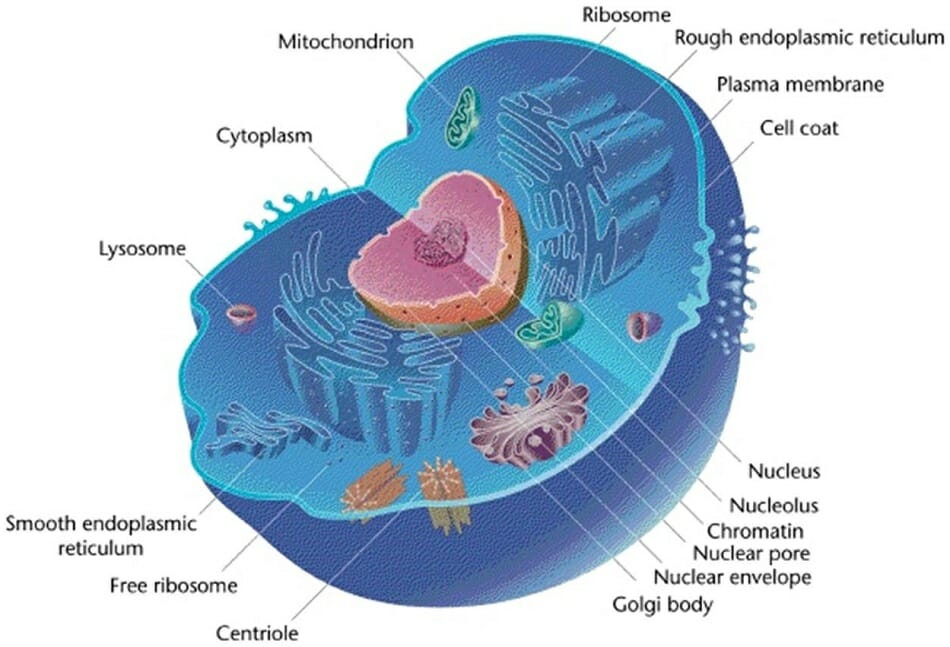
Eukaryotic Cell Definition, Characteristics, Structure and Examples
Overview of the cell and its contents. Plasma membrane Plasmalemma 1/5 Synonyms: Cell membrane, Membrana cellularis The cell is the smallest functional unit within a living organism, which can function independently. It is made up of several types of organelles that allow the cell to function and reproduce.
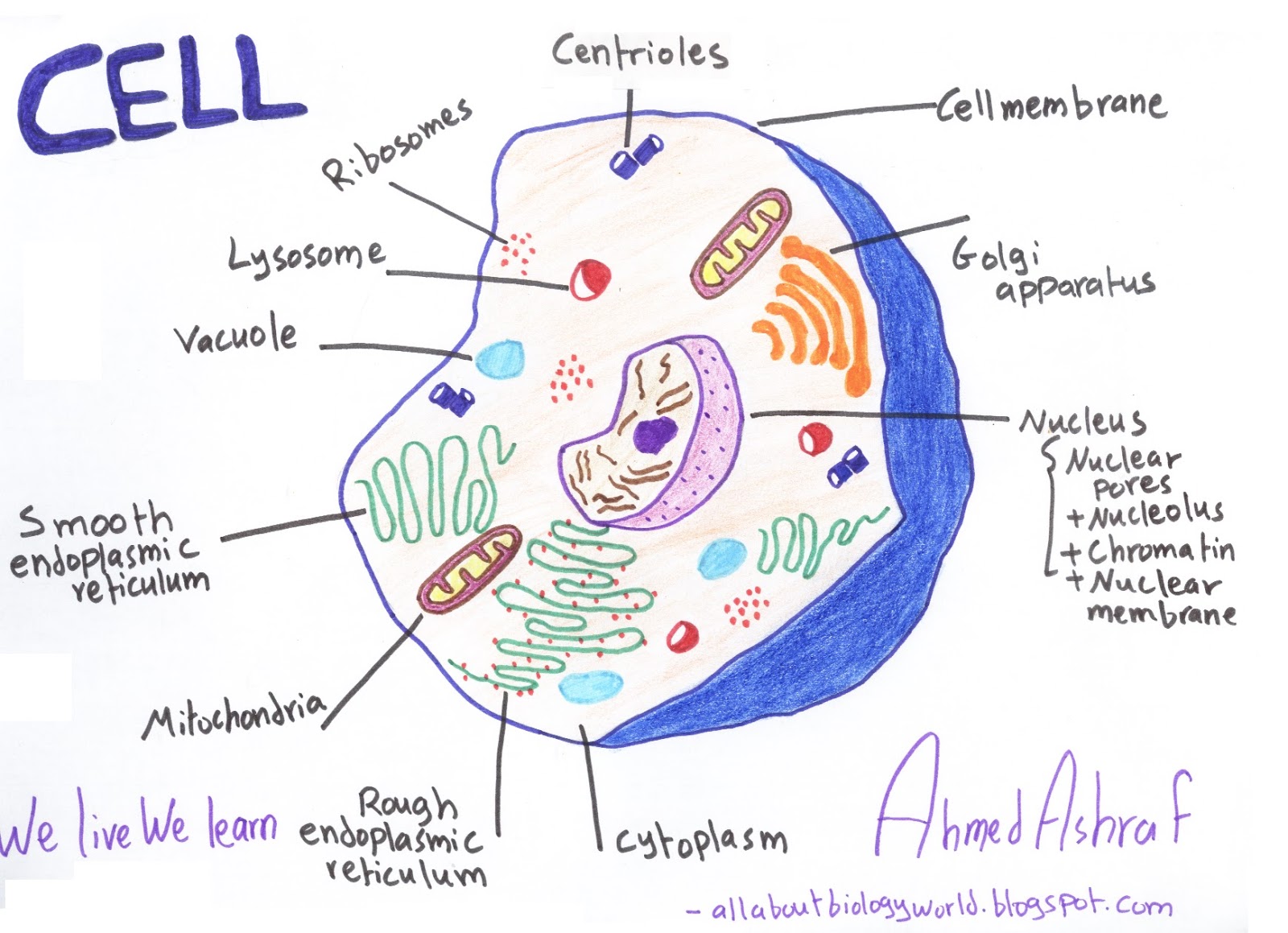
Biology Club Our cells 1 ( structure, function, division, disorder
The Plasma Membrane. Like prokaryotes, eukaryotic cells have a plasma membrane ( Figure 3.8) made up of a phospholipid bilayer with embedded proteins that separates the internal contents of the cell from its surrounding environment. A phospholipid is a lipid molecule composed of two fatty acid chains, a glycerol backbone, and a phosphate group.
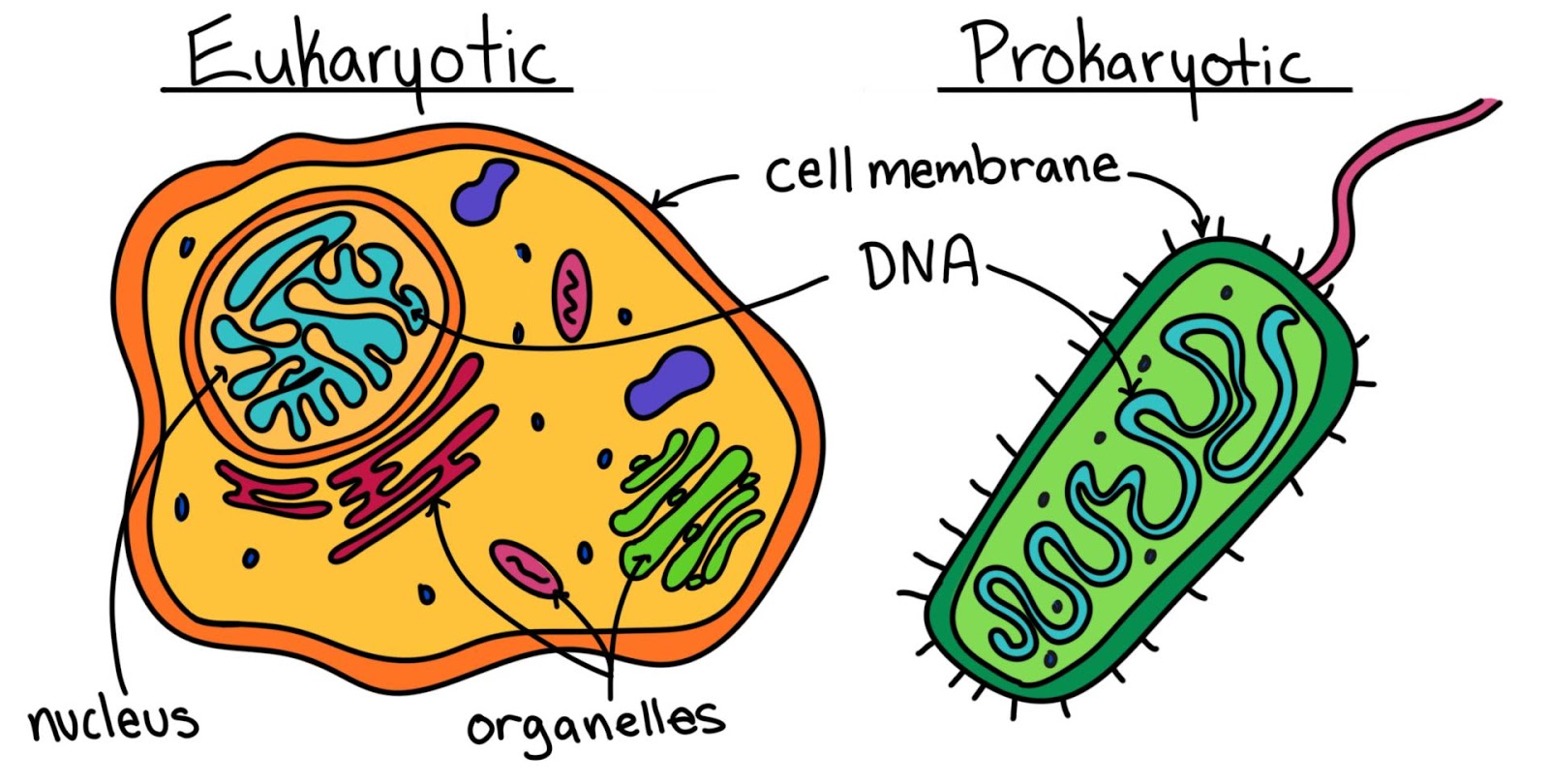
Bilingual Year 6 What are the different type of cells?
Unlike prokaryotic cells, eukaryotic cells have: 1) a membrane-bound nucleus; 2) numerous membrane-bound organelles such as the endoplasmic reticulum, Golgi apparatus, chloroplasts, mitochondria, and others; and 3) several, rod-shaped chromosomes. Because a membrane surrounds eukaryotic cell's nucleus, it has a "true nucleus.".
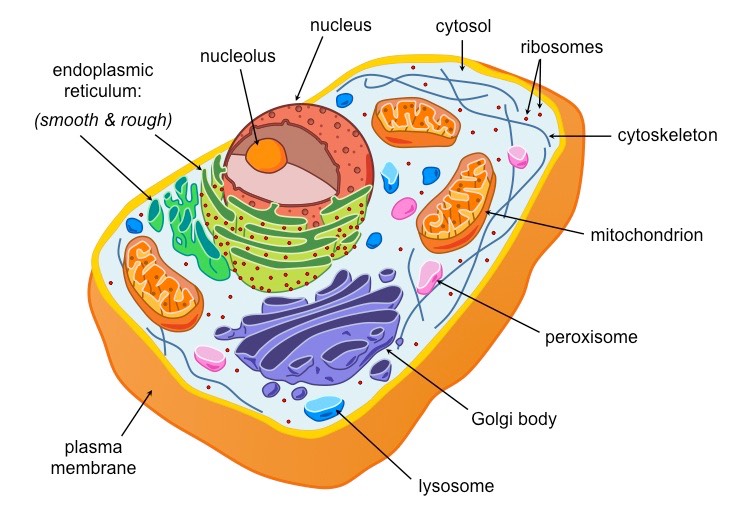
Characteristics of Eukaryotic Cellular Structures ALevel Biology
1. The Plasma Membrane 2. The Cytoplasm 3. The Cytoskeleton 4. The Nucleus 5. The Endoplasmic Reticulum 6. The Golgi Apparatus 7. Lysosomes 8. Vesicles and Vacuoles 9. Ribosomes 10. Mitochondria 11. Peroxisomes 12. Plastids 13. Cilia and Flagella Animal Cells versus Plant Cells

Eukaryotic Cell Diagram
The Cytoplasm. The cytoplasm is the cell's entire region between the plasma membrane and the nuclear envelope (a structure we will discuss shortly). It is comprised of organelles suspended in the gel-like cytosol, the cytoskeleton, and various chemicals (Figure 4.8).Even though the cytoplasm consists of 70 to 80 percent water, it has a semi-solid consistency, which comes from the proteins.

Share 73+ eukaryotic cell sketch latest seven.edu.vn
The Cell Wall. In Figure 3.3. 1 b, the diagram of a plant cell, you see a structure external to the plasma membrane called the cell wall. The cell wall is a rigid covering that protects the cell, provides structural support, and gives shape to the cell. Fungal and protist cells also have cell walls.

Biology 101 Cells Owlcation
Eukaryotic cells have a true nucleus, which means the cell's DNA is surrounded by a membrane. Therefore, the nucleus houses the cell's DNA and directs the synthesis of proteins and ribosomes, the cellular organelles responsible for protein synthesis. The nuclear envelope is a double-membrane structure that constitutes the outermost portion.